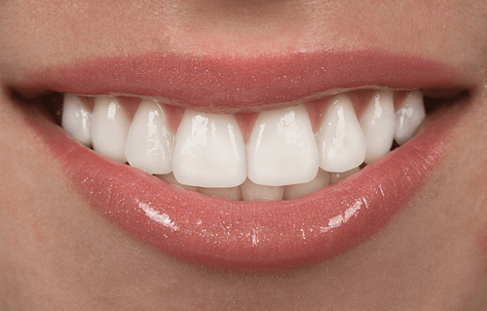
Transforming smiles with cosmetic dentistry has been a part of Dr. Ashwini Bhave’s vision since she started Bay Area Dental Specialists. Dental bonding is a relatively quick and conservative way to improve the appearance of your imperfect teeth or teeth with superficial damage. The bonding process is similar to the way a sculptor uses clay to make a beautiful creation — Dr. Bhave applies a composite resin material to your chipped, broken or otherwise flawed tooth and carefully sculpts it to create a more attractive tooth. Her eye for artistry shines through as she remakes your smile through bonding.
What Can Dental Bonding Treat?
Dental bonding is used in a variety of ways to improve the structure or appearance of teeth. For instance, it is commonly used to accomplish the following:
- repair a tooth with a small chip or crack
- reshape an oddly shaped tooth
- lengthen a short tooth
- widen a small tooth
- cover up tooth stains that won’t respond to whitening treatment
- close small gaps in between the teeth
Although bonding is an excellent solution for cosmetic issues, it does not address issues such as alignment problems or badly damaged or decayed teeth.
Dental Bonding Treatment Details
Dental bonding can usually be completed in a single office visit and is virtually pain-free. Treatment takes between 30 and 60 minutes per tooth. Sometimes bonding is combined with other dental treatments, such as teeth whitening or the placement of porcelain crowns or veneers; this extends the total treatment time.
Bonding material is available in a variety of shades, so Dr. Bhave uses a shade guide to select the material that best matches your natural tooth color.

The first step of the bonding process is to apply a mild etching solution to your tooth, slightly “roughing up” the enamel so that the resin material better adheres, for a stronger bond. Then, Dr. Bhave applies small amounts of the composite resin material to the tooth, sculpting and shaping it as needed. A high-intensity light cures each layer of resin to quickly harden it. Dr. Bhave checks the way your teeth fit together to ensure the bonding does not interfere with your bite.
When you are happy with the look and feel of your bonded tooth, Dr. Bhave finishes the process by polishing it.
How to Ensure Best Results
Although dental bonding is not a permanent solution, you should be able to enjoy your results for as long as 10 years. How well you take care of your teeth, and the foods you eat, can affect how long your results last. Bonded teeth can be brushed and flossed like natural teeth and should be checked by Dr. Bhave every six months. If you avoid biting or chewing hard objects (e.g., nuts, shells, ice), you can extend the lifespan of your bonding.
Dental Bonding FAQ’s
How can dental bonding improve my smile?
The goal of dental bonding is to enhance your smile by addressing a number of cosmetic imperfections in the teeth. The treatment is a great option in the following circumstances:
- Desire to conceal a crack or chip in the teeth
- Conceal tooth discoloration
- Fix gaps between the teeth
- Give the appearance of longer teeth for an improved smile
- Alter the shape of the teeth
Are dental bonds the same as veneers?
While dental bonds and veneers are both designed to improve the smile, the two are not the same. Porcelain veneers are thin shells that are placed over the front surface of the teeth to improve the smile. Some of the tooth’s natural enamel is removed before veneers can be securely placed, meaning veneers are not reversible.
Alternatively, dental bonds do not require the removal of the enamel before being placed on the teeth to enhance the smile. Instead of a thin porcelain shell, dental bonding involves the application of a composite resin directly to the surface of the teeth.
What happens before dental bonding?
Ahead of your dental bonding procedure, Dr. Bhave will discuss your cosmetic dental goals. You will have the opportunity to bring up any questions about the procedure. X-rays of your gums will be taken to determine your candidacy. If you have other dental issues such as gum disease or cavities, you will typically need to treat those conditions before dental bonding.
What should I expect during the procedure?
Your dental bonding procedure will include the following steps:
Shade selection: Dr. Bhave uses a shade guide to select the resin that best complements your natural teeth.
Tooth preparation: Before the resin material is applied, the teeth are prepped. The surfaces of the teeth are roughened up and a special liquid is applied. This step helps create the perfect foundation for the material to be applied.
Application of the material: Dr. Bhave then molds and smooths the composite resin material onto the teeth to create the desired appearance.
Curing: After the application, the material is securely bonded to the tooth with the help of a special curing light.
Polishing: When all adjustments have been made, your teeth will be polished, revealing a brilliant smile.
Does dental bonding hurt?
Dr. Bhave and his skilled staff take measures to ensure patients receive an optimal experience when receiving services. This includes employing all appropriate methods to ensure a comfortable, pain-free treatment. With that said, dental bonding generally is not a painful procedure. The treatment area is not near the sensitive nerve inside the tooth. Typically, anesthesia is not even required.
Is there a recovery period?
A key benefit of dental bonding is that it does not require any downtime or a recovery period. The bonding process includes curing, meaning your new smile is secure and ready to show off as soon as you leave Dr. Bhave’s office. However, it is important to take care of your teeth following your treatment. Brushing and flossing with the correct techniques and seeing Dr. Bhave for regular checkups will keep your smile shining and in good health for years to come.
Your new smile will remain in place for up to 10 years with proper care.
How long does dental bonding last?
Dental bonding does not last as long as other cosmetic and restorative dentistry procedures, such as veneers or crowns. The resin material may last three to ten years; its longevity depends in part on good oral hygiene and regular dental exams and teeth cleanings. Depending on how well you care for your teeth, you may enjoy your dental bonding results for 10 years or longer before the material needs to be repaired or replaced.
Will it be obvious I’ve had dental bonding?

Will I need multiple visits for dental bonding?
Dental bonding typically takes 30 to 60 minutes per tooth. Unlike dental crowns and porcelain veneers, tooth bonding requires a single visit to Bay Area Dental Specialists. The treated tooth does not require extensive prep work like enamel reduction, so the process is simple and fast. If you need dental bonding on multiple teeth, you may need to schedule additional visits.
How do I care for teeth with dental bonding?
You can care for your bonded teeth like your natural teeth by brushing twice daily, flossing once daily, and using mouthwash to clear away food debris and bacteria in tight spaces between your teeth. Visit our dentist twice a year for dental exams and teeth cleanings. These appointments and good oral hygiene at home can ensure you enjoy your dental bonding results long-term with a healthy, flawless smile.
The composite resin used for dental bonding can chip and crack like your natural teeth, so it is best to avoid eating hard foods, biting your nails, and using your teeth to open difficult packaging. Chew hard foods with your back molars instead of your front teeth, and use a custom nightguard to protect your teeth from grinding and clenching while you sleep. Dark-colored foods and drinks may cause tooth discoloration and stain the bonding material. Limit coffee, tea, wine, tomato sauce, and berries to prevent staining.
How old must I be for dental bonding?

Children tend to be harder on their teeth than adults and often require dental work for cavities and minor damage. Dental bonding is an easy, painless fix for kids needing tooth repair.
Will my repaired tooth stain?
The composite resin material may stain over time without good oral hygiene. Teeth bonding doesn’t respond to whitening treatment, but Dr. Bhave may recommend polishing the material to remove the discolored surface area. Another treatment option for a discolored restoration is to apply new bonding material and resurface the tooth. Sometimes, stained dental bonding requires complete replacement. However, you can avoid tooth stains by brushing, flossing, and rinsing daily and enjoying a healthy diet with foods and drinks that are less likely to cause tooth discoloration.
When can I eat after teeth bonding?
Dental bonding cures the resin material to your teeth during your appointment so that you can eat right after the procedure. Patients may have increased teeth sensitivity to hot and cold foods for the first few days after teeth bonding.
Will dental bonding change my bite?
Teeth bonding can improve your oral health by decreasing your risk of tooth decay and gum disease with stronger teeth and creating a more aesthetically pleasing smile, but it should not affect how your teeth come together. Dr. Bhave is an experienced dentist who will ensure your bite feels natural during dental bonding. After curing the composite resin to the tooth’s surface, Dr. Bhave may polish some areas to correct bite issues. In the hands of a qualified dentist, your bite should feel the same after dental bonding.
Learn More about Dental Bonding
To learn more about dental bonding treatment and how it can transform your smile, Dr. Bhave invites you to contact our practice. You can get in touch with our office by calling or sending us an email today!



